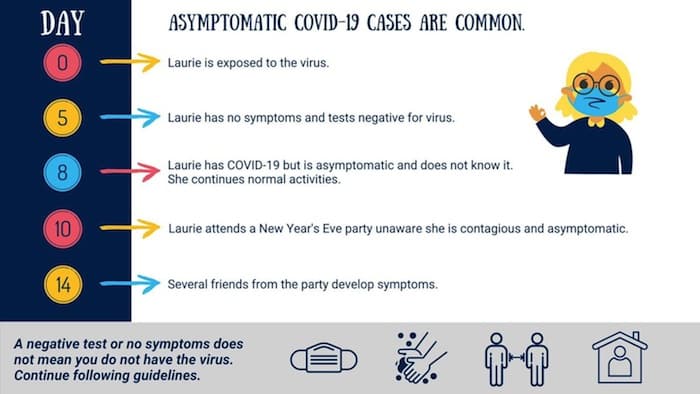More deaths as Monroe County receives vaccine

From Monroe County up to the national level, much of the data related to the coronavirus pandemic is pointing in the right direction even as more cases, deaths and hospitalizations are reported.
Monroe County has recorded two more deaths in the last week, though two more may soon be added to the county’s 2020 total.
On Sunday and Monday, Monroe County Health Department Administrator John Wagner reported the deaths of men in their 70s who were not associated with senior care facilities.
The Illinois Department of Public Health on Tuesday reported another coronavirus death, this time of a man in his 90s, putting the county’s death toll at 59. Wagner said he was unaware of that case on Tuesday but has another one, of a man in his 60s in Hecker, pending.
“We’ve got that on a tentative right now,” he said. “We’re waiting on the coroner’s report on it.”
The 90-year-old’s death was confirmed Saturday.
The county has two more deaths pending as of Tuesday.
“We’re just waiting on the exact age and confirmation, but we’re certain that they’re COVID deaths,” Wagner said.
At last count there were 289 active local cases and 37 residents hospitalized with the virus. The county has had a total of 3,271 cases.
There were 25 cases announced Tuesday, 17 cases announced Monday, 13 cases announced Sunday, 40 cases announced Saturday, 38 cases announced Friday and 71 cases announced Thursday; 11 new cases were announced Wednesday.
Wagner said the large increase on Thursday was due to several days worth of testing results being sent directly to the health departments from facilities in Missouri.
While those numbers are improving, deaths overall have not, as December was the deadliest month of the pandemic so far in the United States. As of this week, 1 in 1,000 Americans have died from COVID-19.
A new study from Washington University in St. Louis and the Veterans Affairs St. Louis Health Care System showed how ravaging the virus can be. According to the study, those hospitalized with COVID-19 are five times more likely to die and four times more likely to need a ventilator than those hospitalized with the seasonal flu.
Researchers also found COVID patients have a much higher risk of developing complications like kidney injuries, stroke, septic shock, blood clots and new-onset diabetes compared to those who contract influenza.
That makes the news that hospitalizations are slightly decreasing that much better.
In the St. Louis region, case totals and hospitalizations are finally dropping.
“When we began the month, we were still in that exponential growth phase. Since then, we’ve slowed down a little bit, which is good,” Dr. Alex Garza of the St. Louis Metropolitan Pandemic Task Force said Monday. “It’s a plateau now with a slight downward turn.”
Although those numbers are trending down, Garza said data still shows the area to be “in a dangerous time” and “at the height of the pandemic.”
The task force, which is made up of physicians and health care professionals from the largest health care systems in the area, reported Monday that the area’s hospital beds are at 79 percent capacity. Its ICU beds were at 87 percent capacity.
“We’re still at a really high level,” Garza explained. “Until we can bring those number of (hospital) admissions down even further and the hospital census numbers down even further, we’re still going to be in a very difficult time. And we still have to see if we’re going to see any increase in cases from the Christmas holiday.”
Wagner said last week he did not expect to see a significant jump in cases here after Christmas and New Year’s Day.
Around that time, however, he said Monroe County should see a spike in the number of COVID vaccines it receives each week.
That would happen after the state gets at least the first portion of doses for long-term care facilities to CVS and Walgreens, which are handling distribution to those places.
Monroe County received its first 100 doses of the vaccine last week, with all of those already being administered to health care workers who live here.
The county has received another vaccine shipment and will host another drive-thru vaccination clinic at the fairgrounds from noon to 4 p.m. Monday. This will again be for healthcare workers that have direct patient contact.
“That should pretty much do our health care workers in Monroe County,” he said. “Then we’ll just be waiting on the state to give us the go-ahead to move to the next phase.”
Once that happens, the next group to get the vaccine will be essential workers like educators and first responders, followed by people ages 75 and older, per Centers for Disease Control and Prevention guidelines.
The day before Monroe County received its first vaccine shipment, Columbia EMS began vaccinating its workers.
Columbia EMS Chief Kim Lamprecht reported all but one of her full-time crew members got their first shot, while about 60 percent of the part-time employees got theirs. The second round of vaccination for those individuals is set for mid-January.
Columbia EMS got the Pfizer-BioNTech vaccine through the BJC Hospital system.
Monroe County received the Moderna vaccine.
Overall, the Waterloo zip code has had 1,670 cases (16,392 tests performed), the Columbia zip code has had 1,263 cases (7,683 tests) and the Valmeyer zip code has had 129 cases (673 tests), according to the IDPH.
The IDPH on Jan. 1 listed Monroe County, along with all but 22 counties in the state, as being at the warning level for COVID-19. For the week of Dec. 20, Monroe County had 533 cases per 100,000 residents (the goal is less than 50), a test positivity rate of 13.8 percent (the goal is less than or equal to 8 percent), performed 1,524 tests (the goal is to do enough to meet the positivity rate) and 19 percent of ICU beds available (the goal is at least 20 percent).
In St. Clair County, there have been 21,926 total positive tests and 340 coronavirus-related deaths. A total of 214,472 tests have been performed there.
Randolph County has had 3,438 confirmed cases, 163 of which are active. Sixty people have died from the virus.
The metro east, including these counties and Monroe County, has seen its test positivity rate remain well over the level at which mitigations are imposed.
The seven-day rolling average positivity rate was 13 percent on Jan. 2. The region has 13 percent of its medical or surgical beds and 23 percent of its ICU beds available.
Illinois overall is up to 991,719 cases of coronavirus and 16,959 deaths.
There are 3,905 people hospitalized with COVID-19 in Illinois, including 800 people in ICU beds and 457 on ventilators.
Missouri has recorded 405,589 confirmed cases and 5,825 deaths. That includes 62,176 cases in St. Louis County and 16,235 cases in St. Louis City, according to the Missouri Department of Health & Senior Services.
Nationally, more than 20.9 million people have contracted the virus, while at least 356,010 people have died.
Worldwide, there are over 86.1 million cases of coronavirus and over 1.8 million COVID-19-related deaths.







